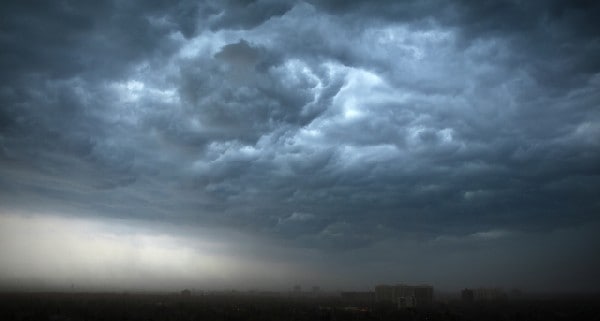
As well as producing spectacular lightning shows, thunderclouds can also sometimes emit strange long-lasting bursts of gamma rays. Now, a group of researchers in Japan claims to have the best evidence yet that these gamma rays are produced by the clouds acting as enormous particle accelerators. The scientists reached this conclusion in the spirit of Benjamin Franklin by studying an electric storm from a mountaintop in Japan.
It has long been known that lightning strikes produce short bursts of gamma rays, but in the past few years scientists have also observed longer gamma-ray events, of up to 90 seconds, that cannot be explained by the same mechanism. Several research groups have linked these longer events with high energy electrons accelerating in the electric field of a thundercloud but there is little physical data to corroborate.
In 2007 Harafumi Tsuchiya of the Cosmic Ray Laboratory of Japan’s RIKEN research institute and colleagues set out to investigate the longer bursts experimentally. The scientists travelled to a nuclear power plant on the Japanese coast to take measurements of electromagnetic activity during a winter thunderstorm. They found — by analysing the energy distribution of the pulse — that the gamma rays do indeed originate from just a kilometre or so above the Earth’s surface.
Lightning strikes twice
With this latest research, Tsuchiya and his colleagues relocated to a Japanese mountaintop 2770 m above sea level in order to study this phenomenon in more detail. At this altitude the scientists were able to capture recordings of both photons and electrons and they say they have now confirmed the accepted theory of how gamma rays are generated.
The researchers observed cosmic electrons, which — after arriving at the Earth’s atmosphere — were accelerated to relativistic speeds in a thundercloud’s electric field. Occasionally these electrons collide with air molecules knocking off electrons which are also accelerated in the field. This can lead to a runaway or “avalanche” of electrons that can emit bremsstrahlung gamma rays if they reach relativistic speeds. “We made a simultaneous detection of gamma rays and energetic electrons arriving from thunderclouds” — the first such observation, Tsuchiya told physicsworld.com.
Researchers in the field are already excited by these new results. “This type of observation is very rare, thus any new observations further our understanding of the phenomena significantly,” said Jeremy Thomas a geophysical field researcher of the Bard High School Early College II, New York and the University of Washington.
Predicting the storms
David Smith at the University of California recognizes the historical significance of this study. “This work is extremely important to the field in that they have demonstrated that these “surges” of gamma rays have an energy spectrum that indicates they are caused by the acceleration of very energetic electrons — a phenomenon first predicted by [Nobel laureate] CTR Wilson in 1925”.
The relatively low intensity and scarcity of these prolonged gamma ray bursts means that they pose no real threat to aviation and communications. What’s more, weather forecasters could benefit from a more thorough understanding of this phenomenon. “These gamma rays may give us a tool for understanding how thunderstorms and lightning work, neither of which we understand very well,” said Joseph Dwyer a lightning researcher at the Florida Institute of Technology.
“This work is interesting because it distinguishes gamma ray bursts produced by specific lightning events from protracted electron and gamma ray production generated by thunderstorms between lightning flashes,” said Giles Harrison, an atmospheric scientist at the University of Reading, UK.
Tsuchiya and his colleagues now plan to construct a series of new detectors that measure the arrival direction of photons associated with lightning as well as thunderclouds. They will install these instruments over a wider area in order to increase the number of recorded events. “These plans would give better understanding of particle acceleration in thunderclouds and lightning,” said Tsuchiya.
This study was published in Physical Review Letters.



